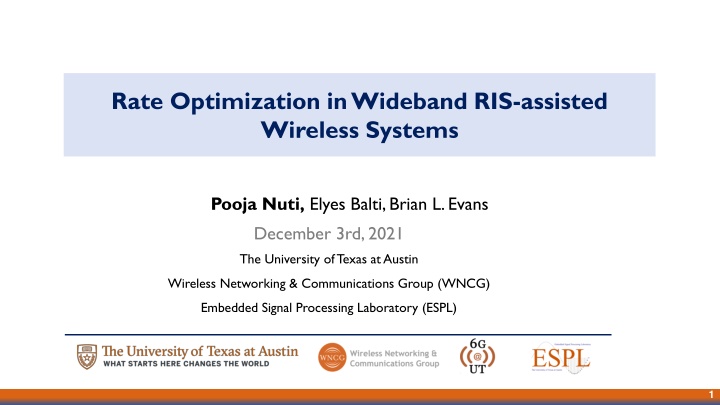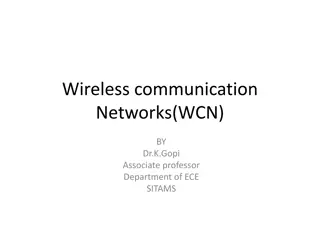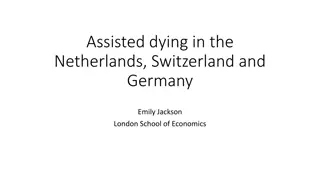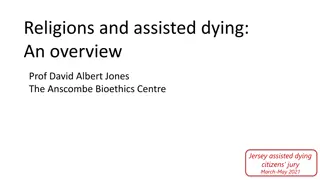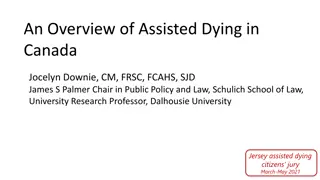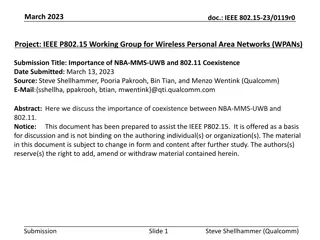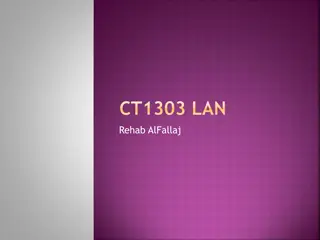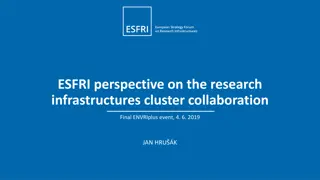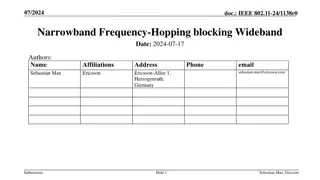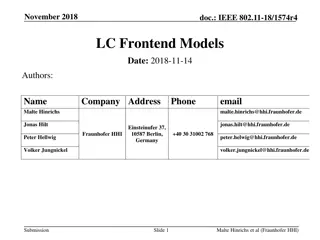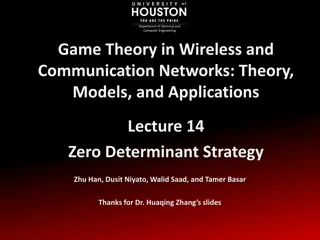Rate Optimization in Wideband RIS-assisted Wireless Systems
This research focuses on rate optimization in wideband RIS-assisted wireless systems, specifically investigating MIMO RIS-assisted systems in sub-6 GHz mmWave settings. Pathloss and blockage modeling, along with LOS vs. spectral efficiency and RIS-UE distance vs. spectral efficiency analyses, are key components of the study. Results indicate a correlation between RIS-UE distance and spectral efficiency, shedding light on the potential of reconfigurable intelligent surfaces for enhancing wireless communication performance. The findings emphasize the importance of optimizing rates in RIS-assisted wireless systems to improve overall system efficiency.
Download Presentation

Please find below an Image/Link to download the presentation.
The content on the website is provided AS IS for your information and personal use only. It may not be sold, licensed, or shared on other websites without obtaining consent from the author.If you encounter any issues during the download, it is possible that the publisher has removed the file from their server.
You are allowed to download the files provided on this website for personal or commercial use, subject to the condition that they are used lawfully. All files are the property of their respective owners.
The content on the website is provided AS IS for your information and personal use only. It may not be sold, licensed, or shared on other websites without obtaining consent from the author.
E N D
Presentation Transcript
Rate Optimization in Wideband RIS-assisted Wireless Systems Pooja Nuti, Elyes Balti, Brian L. Evans December 3rd, 2021 The University of Texas at Austin Wireless Networking & Communications Group (WNCG) Embedded Signal Processing Laboratory (ESPL) 1
Rate Optimization in Wideband MIMO RIS-assisted wireless systems Sub-6 GHz mmWave Setting Pathloss Modeling Added Uniform linear array Uniform panel array Blockage on direct path between BS and UE Rician channels considered ~ i.i.d 2
Pathloss Modeling and Blockage Modeling Pathloss Modeling Blockage Modeling Pathloss exponent for NLOS greater than LOS exponent with higher number of rays/clusters [1] N. S. Perovi , L. -N. Tran, M. Di Renzo and M. F. Flanagan, "Achievable Rate Optimization for MIMO Systems With Reconfigurable Intelligent Surfaces," in IEEE Transactions on Wireless Communications, vol. 20, no. 6, pp. 3865-3882, June 2021, 3
Results (subject to change...) Prob. LOS vs Spectral Efficiency RIS-UE Distance vs Spectral Efficiency 45 Gradient Random No RIS 40 35 Spectral Efficiency (bits/s/Hz) 30 25 20 15 10 5 0 0 20 40 60 80 100 120 140 160 180 200 Distance between RIS-UE (m) 4
